Rank Species | Phylum Chordata Suborder Serpentes Genus Pseudonaja Higher classification Pseudonaja | |
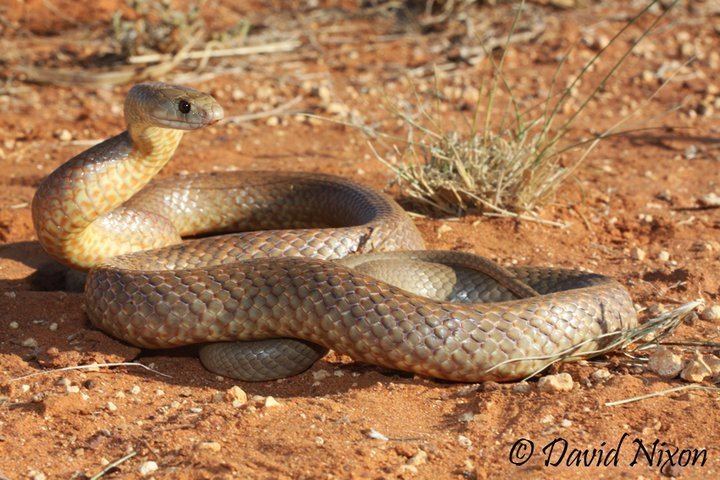 | ||
Similar Pseudonaja, Snake, Pseudechis australis, Reptile, Pseudechis | ||
Don t chase brown snakes pseudonaja nuchalis
Pseudonaja nuchalis, commonly known as the western brown snake or gwardar, is a species of very fast, highly venomous elapid snake native to Australia. Its colour and pattern are rather variable, depending largely on its location. Some experts assert that the western brown's wide variation in appearance and extensive distribution mean that the western brown species in fact covers multiple related, but separate species with three derivative species now officially recognised, P. nuchalis, P. aspidorhyncha, and P. mengdeni.
Contents
- Don t chase brown snakes pseudonaja nuchalis
- Western brown snake pseudonaja nuchalis
- Aboriginal name
- Description
- Distribution and habitat
- Diet
- Lifespan and reproduction
- Venom and symptoms
- Behaviour
- References
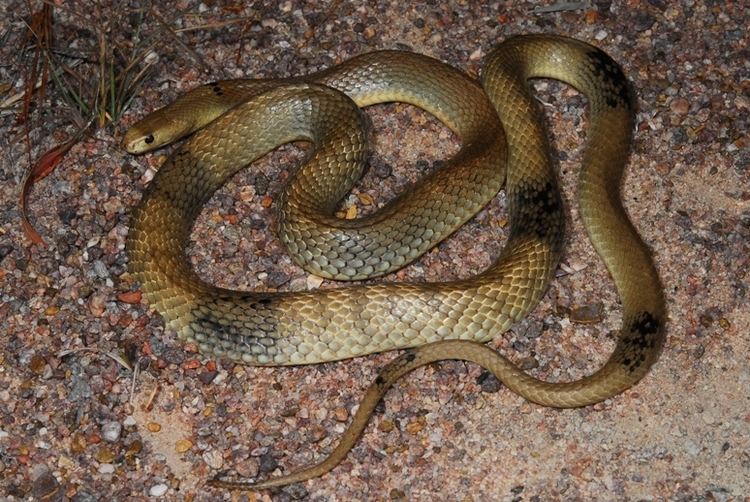
Western brown snake pseudonaja nuchalis
Aboriginal name
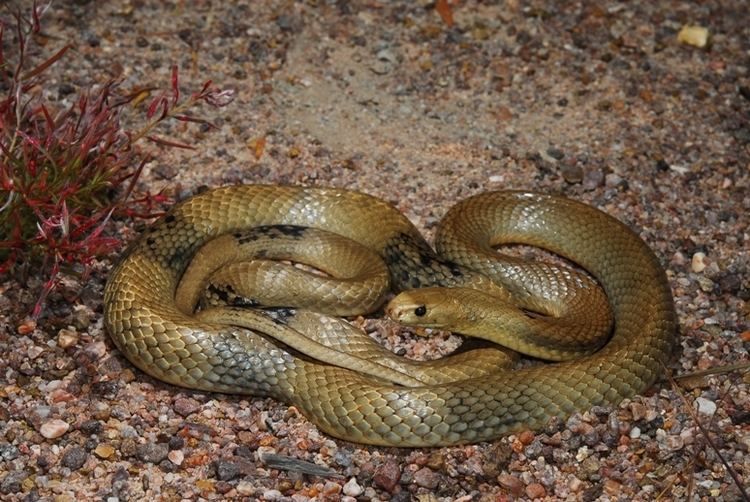
The name "gwardar" is an aboriginal name meaning "go the long way around". While it is a cautious and shy snake, trying to escape before attacking, they will defend themselves when cornered. So, the aboriginal name is actually advice for those who come across the snake in the wild: "going the long way around" is the best course of action.
Description
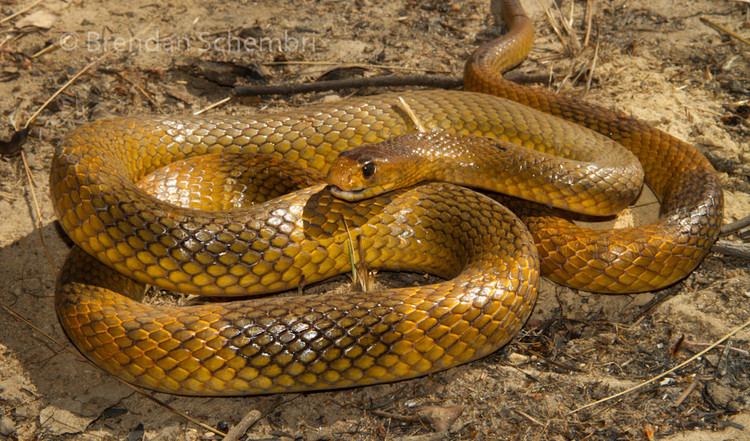
The western brown snake grows up to 1.5 m (4.9 ft) in total length (including tail). Its back can feature shades of orange-brown with flecks and bands, or appear plain. Its belly is cream to orange with pink blotches. Some individuals have jet black heads (this can cause it to be confused with the black-headed python), while others feature a black 'V' shape on the back of their neck, below their head.
Distribution and habitat
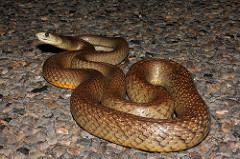
The western brown has a wide distribution and is found across most of the Australian continent, including all of the Northern Territory, as well as most of Queensland, Western Australia, and some of Victoria.
The western brown is a ground dwelling snake which prefers drier habitats but is also found in coastal eucalypt forests, woodlands, and grasslands. Although the western brown is not an arboreal species, it is not uncommon for it to climb small shrubs or trees. It also hides in crevices and under rocks, and in urban areas can be found under rubbish or tin piles.
Diet
P. nuchalis preys upon small mammals and reptiles, including lizards and mice.
Lifespan and reproduction
Little is known about the western brown's lifespan. Mating season is roughly from September to November and the female usually produces around 11-14 eggs, but may produce up to 38.
Venom and symptoms
Although the western brown snake's venom is not the most toxic in the brown snake genus, its average delivery contains a relatively high quantity of venom, and thus the western brown snake has high potential to deliver a deadly bite. Its venom contains neurotoxins, nephrotoxins, and a procoagulant, although humans are not usually affected by the neurotoxins. The bite is usually painless and difficult to see due to their small fangs. Human symptoms of a western brown snake bite are headache, nausea/vomiting, abdominal pain, severe coagulopathy, and sometimes kidney damage. In dogs and cats, paralysis is also likely to occur.
Behaviour
The western brown snake is known to be very aggressive when disturbed or threatened, but like most snakes, will usually prefer to retreat from danger. It may develop nocturnal habits during the warmer months but is otherwise active during the day and enjoys lots of sunlight. The Western Brown snake has also been known to practise cannibalism, although this is not common. Western brown snakes kill their prey with a combination of venom and constriction.
